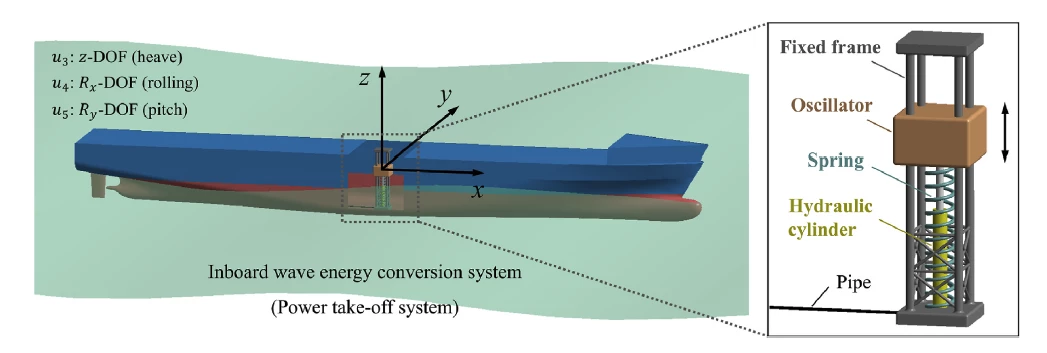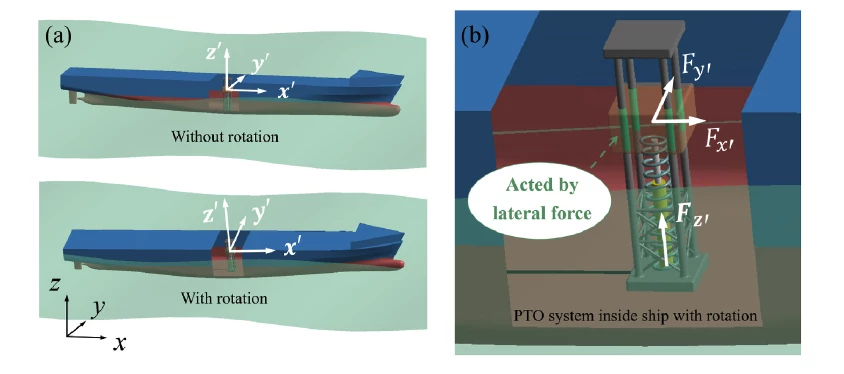Ships can become mobile wave energy converters, say Chinese researchers, using "heaving oscillators" that draw power from heaving, rolling and pitching movements as they move through the sea, while also acting as motion dampers to improve safety.
There are any number of floating wave energy generators under development, goes the thinking here – and yet not many aboard ships, which spend most of their working days in the waves. And where better to generate energy than right there on a ship, where energy storage is shaping up as one of the most difficult hurdles to overcome in the race to decarbonization?
Researchers at the Shanghai Ship and Shipping Institute (go ahead and say that five times fast) proposed a two-body point absorber system that would sit below deck on a freighter, to preserve cargo space, but would also be isolated from the seawater by the hull.
The device would consist of a frame, securely attached to the ship at the top and bottom, with an oscillator body capable of moving up and down the frame rails, a spring to suspend the oscillator, and a hydraulic cylinder attached to the floor and the bottom of the oscillator.

The cylinder would pump oil through a hydraulic power take-off device to generate energy as the oscillator slides up and down relative to the ship and the fixed frame. The oscillator, meanwhile, is filled with water, but there's a system for adding and removing water to change its weight. This could be particularly handy under extreme weather, when the oscillator could be de-weighted to reduce stress on the ship's structure.
The design, say the researchers, gives you an oscillator that's "capable of moving along the slide rods when the ship undergoes heaving, rolling, or pitch motion" – thus, generating energy from three different axes of motion, as opposed to previous designs that have managed only one or two.
The team built a model of the system for simulation testing, and ran a bunch of tests to determine how the system would perform at various speeds, wave angles and the like. The study determined the greatest efficiency of energy capture would be in beam seas, where waves are rolling in at 90 degrees, directly hitting the ship's side. Under these conditions, the system could reach "up to 90.71% of theoretical maximum absorbed power by an axisymmetric point absorber under a certain wave period."

The team told Recharge News it was planning to prototype its system for wave tank testing as a next step, and that the same system could "easily be extended" to work with other offshore structures.
One thing this study didn't investigate is how much power it could be expected to contribute on an average trip – and that, along with space considerations, will be key to whether systems like this reach widespread deployment.
The study was published in the journal Renewable Energy.
Source: Recharge News





